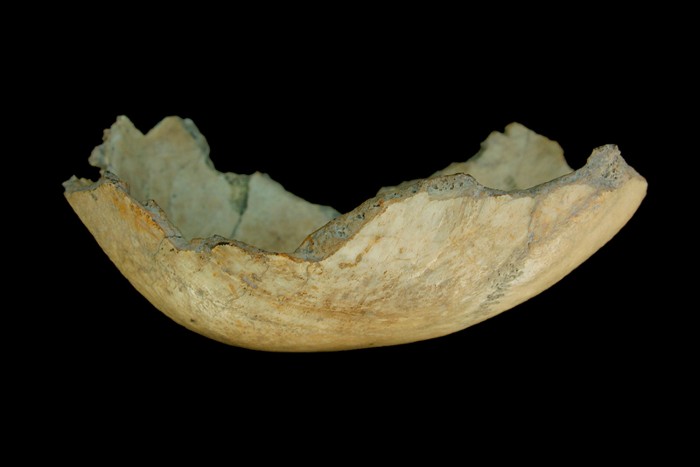Mystery of human skull defleshed and boiled by ancient farmers

This skull cup, made from a human cranium, shows striations from stone tools; other marks indicate that it was also boiled in a pottery vessel. Credit: J. Santana et al./Am. J. Phys. Anthropol.
ANTHROPOLOGY 01 MARCH 2019
Polished ‘skull cup’ and human bones bearing tooth marks point to cannibalism in Europe in around 3000 BC.
Marks on a skullcap and other well-scraped human bones suggest that cannibalism was prevalent among prehistoric people in the south of the Iberian Peninsula.
Archaeologists discovered the 5,000-year-old remains inside a Spanish cave. On closer inspection, Jonathan Santana at Durham University, UK, and his colleagues found marks on some of the bones that indicated someone had chewed them and sucked their nutrient-rich marrow. In addition, a skullcap had been skinned, polished and boiled, apparently to give it a smooth appearance. This carefully prepared cranium, known as a skull cup, might have been used in cannibalistic rituals.
The finds strongly indicate that early Iberian farming communities included human flesh in their diets. But why they ate their kin and carved their skulls is unclear.
Cannibalism might have been a habit among extremely violent groups that kept enemies’ heads as trophies, the researchers suspect. But the finds could also be remnants of funerary ceremonies in which people consumed flesh of deceased family members and preserved relics of their loved ones.
https://www.nature.com/articles/d41586-019-00756-z
